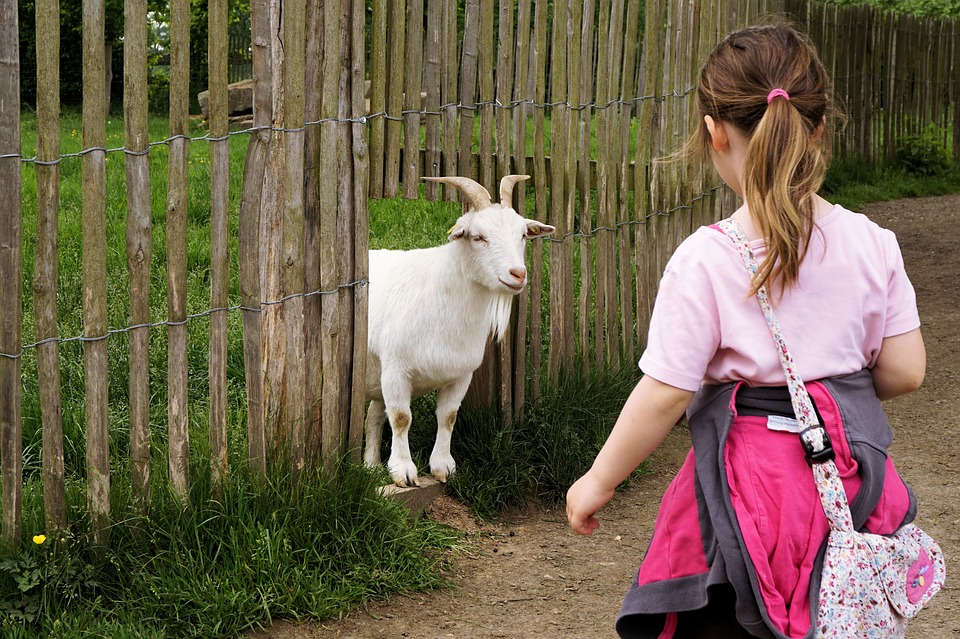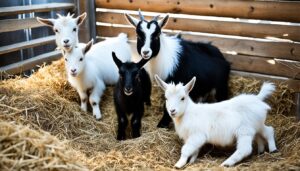If you are asking yourself about how tall should a pygmy goat fence be, then I guess you have already gotten your first pygmy goat or you are looking forward to having one soon. Well, congratulations! Pygmy goats are a perfect addition for your farmyard. While they come with a wide set of care needs, once you grasp them it shouldn’t be difficult to manage. As a matter of fact, these adorable pets can thrive in most climates as a long you provide a good shelter.
Now that you are or are about to become a proud owner of one, you might be wondering, how do I build a good shelter for them. How tall should a pygmy goat fence be? which are the best food materials for the goat? Well, that’s where I come in. In this article, I am going to answer most of your questions regarding providing entertainment and shelter for your goat.
Provide shelter
1. First things first, determine the size of the shed your goat needs
The size of the shed primarily depends on the weather in your area. If you are living in an area with a temperate climate, a bigger shed will be better so that the goat can move around freely. If you reside in an area with heavy winters, a fully enclosed barn will protect the goat from extreme temperatures. There is no point in losing the goat a few days after you’ve acquired it. So, take precautions as necessary.
2. Consider the size of your herd
The number of pygmy goats you want to have will also play a critical role in determining the size of the shed. Typically, one pygmy goat will require a living space of about 15-20 square feet. If you are only considering rearing one pygmy goat, you won’t be requiring tons of space. technically, a 5 by 3-foot shelter will be enough for a single goat. If you have two goats, that translates to 6 by 10 foot shed. This isn’t much space, in fact, a big dog house will just do fine if it is available.
3. Create stalls
If you are considering to have more than one pygmy goat, creating multiple stores will ensure each has its own space. The floor should be covered with gravel and clay since it is easier to clean and maintain. A clay floor will also be easier to repair in case of damages. Hay is perfect when it comes to bedding. Don’t worry that the goat is going to eat it all. Normally, goats don’t eat what is on the floor. Separate troughs are also important for feeding the goats separately. You don’t want one of the goats to eat up everything while others are starving.
4. Don’t forget a fence
Goats love jumping. You don’t want your pet to jump out of the shed and disappear before you can have the pleasure of petting him. A wire fence is perfect but how tall should a pygmy goat fence be? well, though pygmy goats can jump, they can’t jump as high as regular goats. A 4 feet high fence or approximately 1.2m will do the trick and keep the goat within its shed.
5. Include climbing areas
 As I said earlier, goats are climbers and they do love doing it. If you want your goat to be happy, provide them with places where they can jump. Don’t think so widely, an old picnic table will be a perfect place for the goat to pass some time. Dirt hills within the shed will also be as enjoyable as a table. They just need places to jump on and off. To add some adventure and taste, throw a few tires in the shed. They do make good toys for pygmy goats.
As I said earlier, goats are climbers and they do love doing it. If you want your goat to be happy, provide them with places where they can jump. Don’t think so widely, an old picnic table will be a perfect place for the goat to pass some time. Dirt hills within the shed will also be as enjoyable as a table. They just need places to jump on and off. To add some adventure and taste, throw a few tires in the shed. They do make good toys for pygmy goats.
Feeding the right diet
1. Allow your goat to graze
Goats aren’t choosy, they will eat almost anything green from forbs, brush and even grass. Forbs are nutritious weeds like clovers and dandelions and not to forget to mention, are easily available. In summer, the goats will do pretty well with only pasture but that applies if you have enough land to grow it. If you’ve chosen to rear a bunch of pygmy goats, consider growing your own pastures in such a way you can rotate the goat to different sections as you wait for the depleted ones to regenerate.
If you do not have enough land to graze your pygmy goat, alfalfa hay will come in handy. A single goat will consume a pound or two each day. If you can get grains, supplement their diet with them.
2. Supplement their diet with grains
Pygmy goats will require more food supplies when winter comes since there will be places to graze. In such times, supplementing them with grains will provide a substantial amount of nutrients necessary for growth. Grains that can be used as supplements include; oats, barley, and corn.
3. Provide a plentiful supply of water
There is no animal on earth that can survive without water. More importantly, goats are ruminants. This implies that they require more water than average pets or farm animals to digest their food. To make it easy for them, ensure that there is always enough water in the shed for the goats to drink whenever they need to. Also, ensure that the water containers are clean. Don’t leave water in the shed for so many days even if the goats haven’t drunk. Its advisable to change it on a daily basis. Sometimes goats will refuse to drink stale water.
Healthcare
Give vaccinations annually
Like any other domestic animal or pet, your pygmy goats will require annual vaccinations against diseases such as rabies, tetanus, and enterotoxaemia. These can be administered by a local vet or give them all by yourself. If you notice any signs of weakness or sickly behavior, take the goat to vet for diagnosis.
Bottom line
With this information, I hope that you are armed to receive your first pygmy goat. They are quick adapters, easy going and simple to maintain. Most importantly, they are a source of fun as long as they are taken care of.
For a complete step by step guide on how you can build a shelter for your pygmy goat, check out Ryan Henderson shed plan, where you can Start building amazing sheds the easier way with a collection of 12,000 shed plans.



